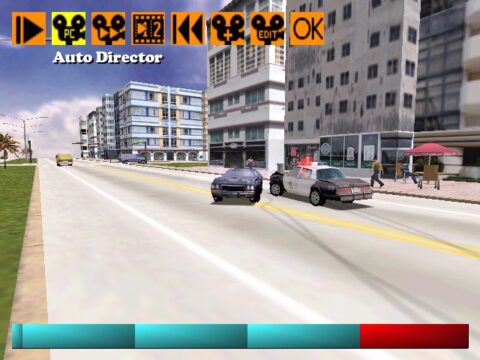
Driver
Written by: Rik
Date posted: February 24, 2006
- Genre: Racing
- Developed by: Reflections
- Published by: GT Interactive
- Year released: 1999
- Our score: 6
There’s always been a little bit of rivalry between Driver and Grand Theft Auto, and rightly so: GTA was the definitive auto-crime game, while Driver took the genre into 3D with some success. However, the release of Grand Theft Auto III brought more direct mockery in the form of a Staunton Island mission which makes reference to one or two of Driver’s faults, specifically the lack of “out-of-car” action on offer. Hopes that the long-delayed Driver 3 would prove a match for GTA were dashed when it was roundly slated on release, and these days GTA is the undisputed king.
Back in 1999, Driver had another rival (on PC at least – the PSX crowd went crazy for it) – Midtown Madness. Although generally well-received, Microsoft’s effort was perceived to be a stop-gap for the real deal; in fact, when it eventually arrived, Driver was generally considered the inferior game. While some considered it a decent port of a console classic, most critics preferred Midtown‘s detailed (if slightly colourful and boxy) rendition of Chicago to Driver’s rather bland-looking US cities, blaming the PSX’s lack of processing power and bemoaning the console-oriented focus of games developers along the way.
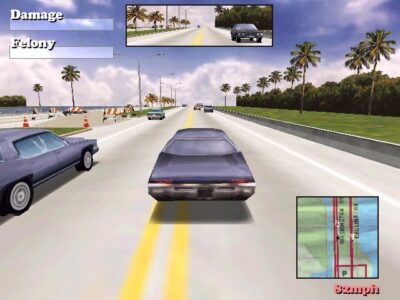
From here it looks fairly boxy and uninspiring, but Driver’s excellent replay feature allows you to appreciate its graphical merits.
While both games are showing their age, Midtown Madness‘ technological superiority is now much less important than it was, and there could be a case to be made for a re-evaluation of each game’s merits. However, since it isn’t 1999 and the games haven’t just been released within a couple of months of each other, it might well be worth asking whether a comparison is justified at all. Okay, so Driver and Midtown Madness both involve driving in the middle of a city, avoiding traffic and the attentions of the police – they’re similar kinds of games – but the focus in each is completely different. While Midtown is all about racing (with the police almost incidental), Driver involves in car chases, losing the cops and completing missions. A bit like Grand Theft Auto, in fact, except without the “do anything” ethos and a much tighter mission structure. Drive here, stop here, drive there, stop there – and do it within the time limit, without a cop car on your tail and with your own vehicle intact.
Driver was never intended as a drive-around free-for-all, it was always about the car-chases and the story mode. So, while there is a “cruise” mode which lets you drive around the city doing whatever the hell you like, it isn’t going to be as interesting as stirring up trouble in GTA or exploring the city in Midtown Madness. It isn’t interesting because most of the props in Driver feel quite generic. While the cities are definitely distinct from each other, most of the streets and scenery contained within are quite bland and samey. And while the cars certainly look authentic, they’re all nameless, bulky gas-guzzlers with little information available on how they?ll perform. There’s a washed-out, retro feel to the game (backed up by some reasonable, but instantly forgettable, 70s music), which some may find appealing during car chases, but it doesn’t make for a memorable free-roaming experience.
Onto the story mode then, which is the meat of the game. You play Tanner, a cop who goes deep undercover as a getaway driver in order to bust a crime syndicate. There’s a little more to it than that, and you get cut-scenes, but frankly they’re awful: I challenge anyone not to instantly forget what they’ve just witnessed as they get into the game proper. Put simply, you start off in a city and after about ten missions or so, the people you’re after move on to another one, and so do you. You often get the opportunity to choose between two or three different missions, so there’s a little bit of variety along the way, but why you’re doing them and who exactly you’re working for always seems to pass you by. Luckily, the mission objectives are rarely very complicated (as we’ve already mentioned) so this information isn’t really necessary, but it would have been nice to have a slightly more involving story.
Before you get to any of that, however, you have to pass a driving “test”, conducted in a car park, which involves performing a variety of fairly routine getaway tasks, such as the handbrake turn, within a set time limit. It’s fair to say that it’s not the easiest introduction to a game, and though the skills gained through repeated attempts at completing the test do come in handy, there aren’t really any scenarios in the game itself where you might be required to use them in such quick succession. Easily frustrated players, be warned: it gets very irritating very quickly. And there’s always the school of thought that says once you’ve bought a game you should be allowed to be as crap as you like without it making you learn stuff first. To illustrate the point, let me just say that I had been considering putting together a walkthrough for this section of the game, but after a few minutes familiarising myself with the challenge decided against it, thankful for the saved games already resting on my hard drive.
Once you get out of the car park, Driver is quite good fun to play initially. The driving model is quite satisfying, allowing you to sling your vehicle around corners and perform wheelspins with ease. Early missions are pleasingly simple and allow for a little bit of showboating on your part if you feel so inclined. Play it for a while, however, and its appeal begins to wane. The missions are pretty repetitive, amounting to a combination of pick-ups and chases, and the relentless aggression of the police cars becomes increasingly tiresome. Early on, their willingness to smash you off the road isn’t too much of a problem, but when they mysteriously acquire powers of clairvoyance in later missions, it becomes difficult to shake them off. Driver also requires you to lose any police attention before you can finish a mission, which may seem logical enough, but in practice there aren’t any particularly subtle ways of losing the fuzz and missions often end with you lapping an area near your target hoping that eventually they might lose interest and drive into a wall or something. Although it seems unrealistic, perhaps the game would have been better served by discarding this rule in the manner of Grand Theft Auto.
Driver can be fun in short bursts, however, and there are few challenge-style sub-games which you might find yourself coming back to once your interest in the story mode has long expired. Getaway and Pursuit are fairly self-explanatory, mimicking typical missions from the main game, and Cross-Town Checkpoint focuses on getting across town as quickly as possible a la Midtown Madness. Others are slightly more interesting: in Survival mode you have to evade a bunch of homicidal cops for as long as possible and Carnage gives you the chance to cause as much damage as you can inside a minute. While these arcade challenges are clearly intended as a side-dish to the main event, they arguably represent the most consistently enjoyable part of the game.
And herein lies the problem. While Driver has a few impressive features, it doesn’t really hang together as a game all that well, mainly due to the largely-uninspiring story mode. Paradoxically, for something that was considered quite groundbreaking whilst in development, Driver‘s main shortcoming is that it doesn’t do anything better than any of the other similar games available. Need for Speed III provides a more thrilling car-chase, Midtown Madness offers more interesting scenery and a wider selection of vehicles, the GTA games are better crime-capers, and you might say that even Interstate ’76 has a more authentic cop-show feel. It still has plenty to offer racing fans (especially those with a penchant for 70s car-chases) but ultimately it’s best enjoyed in short spells.

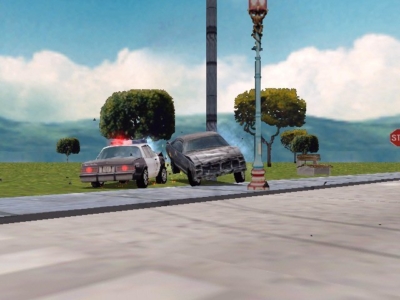
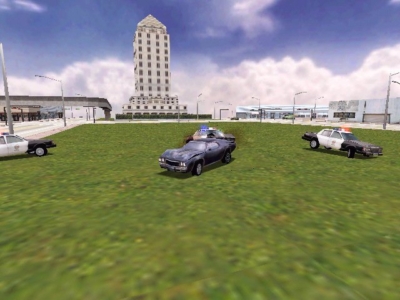
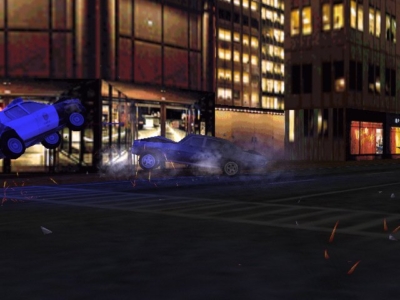

 Posts
Posts